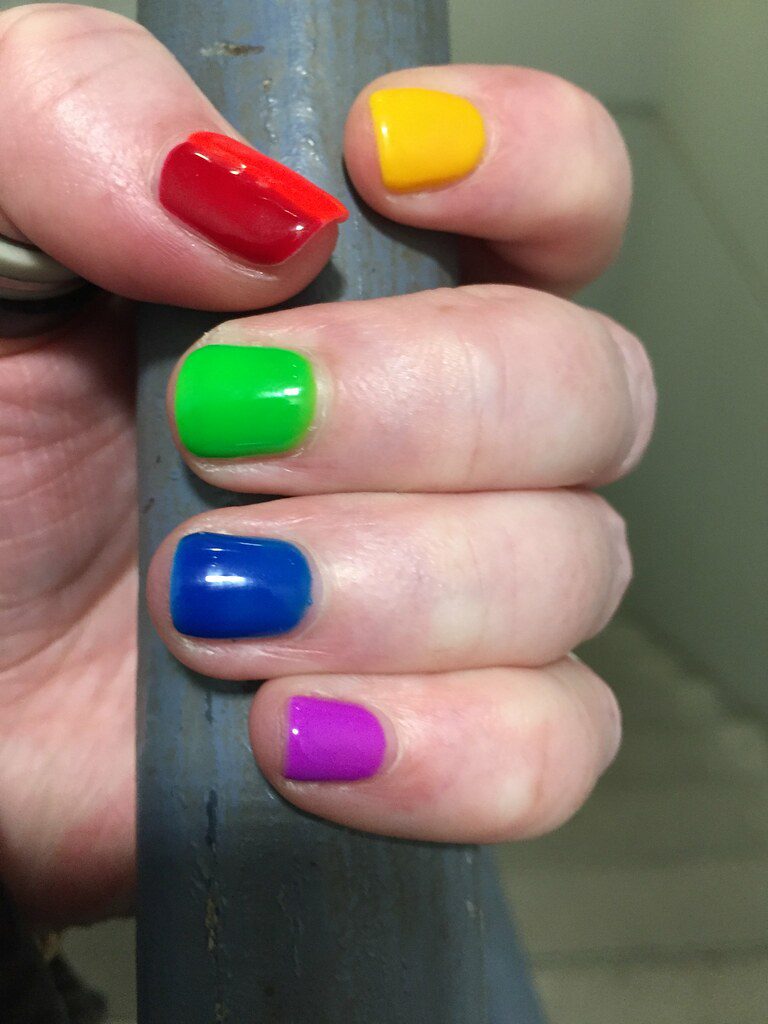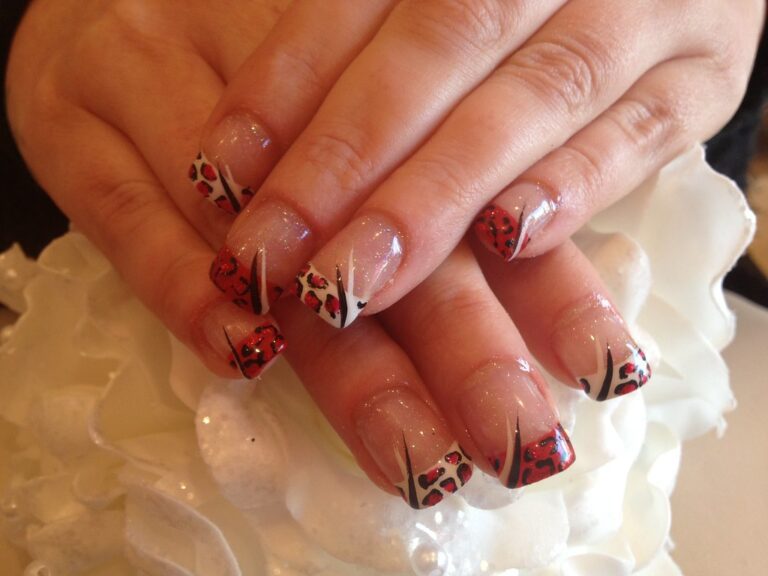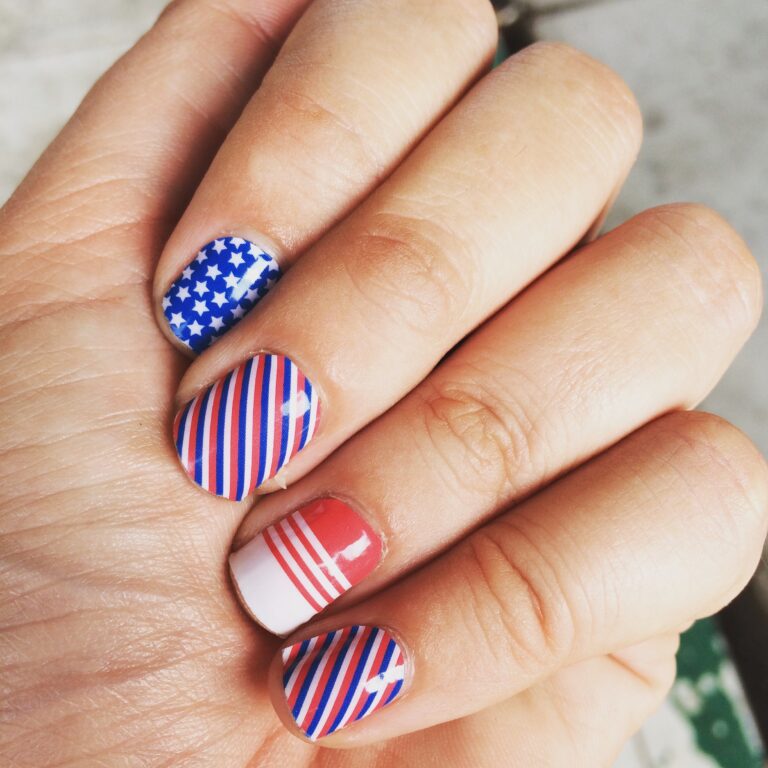“Picture-Perfect: Nails to Hang Your Memories”
Deprecated: mb_convert_encoding(): Handling HTML entities via mbstring is deprecated; use htmlspecialchars, htmlentities, or mb_encode_numericentity/mb_decode_numericentity instead in /home/u654140373/domains/nailinspire.com/public_html/wp-content/plugins/kadence-pro/dist/elements/elements-init.php on line 1267
Deprecated: Function utf8_decode() is deprecated in /home/u654140373/domains/nailinspire.com/public_html/wp-content/plugins/kadence-pro/dist/elements/elements-init.php on line 1275
When it comes to hanging memories on your walls, the right nails can make all the difference. From choosing the perfect nail for your wall material to creating a visually pleasing display, this article will guide you through innovative hanging solutions and damage-free techniques to preserve your walls. Whether you’re decorating for the holidays or planning a professional gallery wall, these tips will help you showcase your memories with style and precision.
Key Takeaways
- Consider wall material and weight limits when choosing the right nail for hanging artwork and photos.
- Innovative hanging solutions such as magnetic systems and adhesive hooks offer damage-free alternatives for modern homes.
- Proper nail placement and the use of wall anchors can help preserve your walls and prevent damage.
- When creating a visually pleasing display, focus on arranging artwork, balancing sizes and colors, and utilizing appropriate lighting.
- For seasonal and temporary decorating, consider interchangeable picture frames and removable hangers for easy updates and changes.
The Art of Choosing the Right Nail

Factors to Consider
Selecting the right nail for hanging pictures is not just about aesthetics, but also about functionality and the longevity of your wall displays. When considering which nail to use, think about the weight of the item you’re hanging, the type of wall material you’re working with, and the overall visual impact you wish to achieve. For instance, a delicate watercolor might require a different approach compared to a heavy framed mirror.
- Wall Material: Different wall types such as drywall, plaster, or brick will influence your choice of nail.
- Weight of the Object: Ensure the nail can support the weight of the object to prevent damage.
- Aesthetic Considerations: The nail head should be discreet and complement your decor.
Tip: Always opt for a nail with a weight capacity greater than the object to be hung to provide a safety margin and prevent wall damage.
Types of Nails for Different Wall Materials
Selecting the right nail for your wall material is crucial for both the stability of the hung object and the integrity of the wall. For drywall, a common choice is the steel nail, which provides a reliable hold for lightweight items. However, for heavier frames, a more robust option like a masonry nail is recommended when dealing with concrete or brick walls.
- Drywall: Use steel nails or picture hangers.
- Concrete/Brick: Masonry nails or concrete anchors are best.
- Wood: Finishing nails or brad nails offer a clean finish.
- Plaster: Opt for picture hangers designed for plaster to minimize damage.
Tip: Always pre-drill a hole when using masonry nails to prevent the wall material from cracking.
It’s important to match the nail type not only to the wall material but also to the weight of the item being hung. For delicate or thin moldings, pin nails may be the ideal choice due to their small size, while larger woodwork projects will benefit from the support of finish nails.
Weight Limits and Nail Strength
Understanding the weight limits and strength of nails is crucial for hanging items securely without causing damage to your walls. Different nails can support varying degrees of weight, and it’s essential to choose one that can handle the load of your picture or decor item.
-
For lightweight items, such as small picture frames, standard steel nails or brads may suffice. However, for heavier objects, you’ll need to consider nails designed for more substantial loads.
-
Here’s a quick reference guide for nail weight limits:
| Nail Type | Max Weight Load |
|---|---|
| Steel Nail | 10-15 lbs |
| Picture Hanger | 20-50 lbs |
| Masonry Nail | 30-100 lbs |
| Anchor Bolt | 50-100 lbs |
Tip: Always check the manufacturer’s specifications for the exact weight limit before hanging anything. Overloading a nail can lead to wall damage or, worse, your treasured items falling.
- It’s not just about the weight—the nail’s strength and durability are also determined by its material and design. For instance, a masonry nail is much more robust than a standard nail and is specifically designed for concrete or brick walls.
Innovative Hanging Solutions for Modern Homes

Magnetic Hanging Systems
Magnetic hanging systems offer a sleek and modern approach to displaying your favorite memories without the need for traditional nails or screws. These systems utilize powerful magnets to secure artwork and photos to walls, providing a clean look that is both easy to install and adjust.
Advantages of magnetic hanging systems include:
- Ease of installation and repositioning
- No damage to walls
- Aesthetic appeal with minimal hardware visibility
When considering a magnetic system, it’s important to assess the weight of the item you intend to hang. While these systems are incredibly versatile, they do have limitations based on the strength of the magnets and the thickness of the materials involved.
Tip: Always test the magnetic strength with your specific wall material before fully committing to the placement of your artwork.
Adhesive Hooks and Strips
Adhesive hooks and strips offer a versatile and easy-to-install solution for hanging pictures without the need for tools or permanent holes in your walls. These products rely on strong, pressure-sensitive adhesives that can securely hold frames and are ideal for renters or anyone looking to avoid damage to their wall surfaces.
When selecting adhesive hooks and strips, it’s important to consider the weight capacity and the surface you’ll be adhering them to. Most products will specify the maximum weight they can support, and it’s crucial to adhere to these guidelines to prevent damage to both your wall and your pictures. Here’s a quick guide to help you choose the right product:
- For lightweight frames: Use small adhesive strips.
- For medium-weight frames: Opt for larger hooks or multiple strips.
- For heavy frames: Consider using specialty hooks designed for increased weight capacity.
Tip: Always clean the wall surface with alcohol before applying adhesive products to ensure the best possible bond.
Remember that while adhesive hooks and strips are a convenient option, they may not be suitable for all types of wall finishes or for very heavy or valuable frames. In such cases, alternative hanging methods should be considered.
No-Damage Wall Hangers
In the quest to keep walls pristine while still enjoying the flexibility of decorating, no-damage wall hangers have emerged as a popular solution. These innovative products allow you to hang pictures and other items without the need for drilling or hammering, which can be especially appealing in rental properties or for those who frequently change their decor.
No-damage hangers come in various forms, including adhesive strips, suction cups, and temporary hook systems. They are designed to leave walls untouched upon removal, making them an ideal choice for maintaining the integrity of your wall surfaces.
- Adhesive strips are easy to apply and remove, and they come in different strengths to accommodate various weights.
- Suction cups work best on smooth, non-porous surfaces and can be repositioned as needed.
- Temporary hooks can often bear more weight and can be removed cleanly.
Tip: Always check the weight limit of no-damage hangers before use to ensure the safety and security of your hung items.
Preserving Your Walls: Damage-Free Techniques

Proper Nail Placement
When it comes to proper nail placement, it’s crucial to consider the wall material and weight of the item being hung. Different wall materials require different types of nails, and understanding the weight limits and nail strength is essential for preventing damage. Implementing wall anchors and stud finders can provide additional support for heavier items, ensuring a secure and damage-free hanging experience. Additionally, using adhesive hooks and strips can be a damage-free alternative for lighter items, offering flexibility and ease of removal when needed. Proper nail placement is the foundation for preserving your walls and ensuring a long-lasting display of memories and artwork.
Using Wall Anchors and Stud Finders
When it comes to hanging heavier items, the use of wall anchors and stud finders is essential for ensuring stability and preventing damage. Wall anchors provide the necessary grip in the drywall when studs are not available, while stud finders help locate the solid wood frames behind the wall for a secure mount.
- Wall Anchors: Ideal for drywall or plaster where no stud is present. They expand behind the wall to distribute weight more evenly.
- Stud Finders: These devices detect the edges and center of wood studs. Magnetic stud finders can locate nails or screws in the stud, while electronic ones detect changes in wall density.
Tip: Always verify the weight capacity of your wall anchors and ensure they are suitable for the item you’re hanging. Overloading an anchor can lead to wall damage or the item falling.
For those without a stud finder, there are alternative methods to locate a stud such as tapping on the wall to listen for solid sections or using a small nail to probe for studs. However, these methods are less reliable than using a dedicated tool.
Alternatives to Nailing
When it comes to hanging pictures and artwork, the traditional nail is not always the best or only option. Adhesive hooks and strips have become a popular choice for those looking to avoid damage to their walls. These products are designed to adhere securely to the wall and can be removed cleanly without leaving residue or causing damage.
Command Hooks and Picture Hanging Strips are examples of products that offer a damage-free and convenient alternative to nails. They are particularly useful for renters or anyone who prefers not to leave permanent holes in their walls. For heavier items, consider using anchors and screws, which provide sturdy support without the need for a nail.
Remember, before applying any adhesive product, ensure the wall surface is clean and dry to maximize adherence and prevent future issues.
For those who prefer a more traditional approach without the permanence of nails, wall hangers can be a great solution. They regulate the angle and depth of the nail and often have flat backs to prevent damage to the wall surface. Here’s a simple list of alternatives to nailing:
- Command Hooks
- Picture Hanging Strips
- Adhesive Hooks
- Removable Adhesive Tapes
- Wall Anchors and Screws
- Wall Hangers
Creating a Visually Pleasing Display

Arranging Artwork and Photos
Creating a harmonious arrangement of artwork and photos on your walls can transform a room from ordinary to extraordinary. The key is to find a balance that complements the space while reflecting your personal style. Start by selecting a focal point, often the largest piece, and arrange smaller items around it. This creates a visual anchor that draws the eye.
Consider the following when arranging your display:
- The theme of your collection
- The color palette of the room
- The spacing between frames
- The alignment of the top or bottom edges of the frames
Tip: For a cohesive look, maintain a consistent gap between frames, usually 2-3 inches.
Remember to mix different sizes and orientations to add interest and movement to your wall. A common approach is to lay out your arrangement on the floor before transferring it to the wall. This allows you to experiment with different configurations without committing to nail holes. Lastly, ensure that your arrangement is at eye level, which typically means the center of the artwork should be about 57 inches from the floor.
Balancing Sizes and Colors
When creating a visually pleasing display, it’s essential to balance the sizes and colors of the artwork and photos. This balance ensures that the overall composition is harmonious and appealing to the eye. Subtle emphasis can be achieved by using a combination of large and small pieces, as well as a mix of vibrant and neutral colors. Additionally, consider the placement of each item to create a sense of cohesion and flow throughout the display. Implementing a table for presenting structured, quantitative data may be useful for comparing sizes and colors of different pieces.
The Importance of Lighting
Lighting plays a pivotal role in the presentation of your wall displays. [Accent lighting](https://utilitiesone.com/the-role-of-lighting-in-showcasing-restoration-and-renovation-projects), for instance, can transform the ambiance of a room, casting shadows and highlighting textures that draw the eye to your cherished memories. It’s not just about illumination; it’s about creating a visual journey.
Balance is key when it comes to lighting. Too much light can wash out colors and details, while too little can leave your display in the shadows, unnoticed. Consider the interplay between natural and artificial light sources to achieve a harmonious effect that enhances the mood of the space.
Remember: The right lighting can elevate your display from ordinary to extraordinary.
Here are a few tips to optimize lighting for your displays:
- Use adjustable lighting to change the mood for different occasions.
- Direct light towards the center of your display to create a focal point.
- Experiment with different bulb temperatures to complement the colors in your artwork.
Seasonal and Temporary Decorating Ideas

Interchangeable Picture Frames
When it comes to decorating with interchangeable picture frames, the possibilities are endless. These versatile frames allow you to effortlessly switch out artwork and photos, providing a dynamic and ever-changing display. The rustic farmhouse design of these frames adds charm to any space, making them a popular choice for those seeking a touch of nostalgia in their decor. Whether you’re showcasing family photos or seasonal artwork, interchangeable frames offer a customizable solution for your wall decor needs.
For those who enjoy variety and flexibility in their home decor, interchangeable picture frames are a must-have. With the ability to display multiple photos simultaneously, these frames serve as a canvas for self-expression, allowing you to curate a visual story that reflects your unique style and personality.
Consider incorporating a mix of frame sizes and styles to create visual interest and depth in your display. This approach adds a layer of creativity to your decor, making each arrangement a work of art in itself.
Tip: When arranging interchangeable frames, experiment with different layouts and compositions to find the perfect balance between cohesion and creativity.
Decorating for Holidays and Events
When decorating for holidays and events, it’s important to consider the overall theme and atmosphere you want to create. Start with a cheap store-bought wreath and then personalize it with your own unique touches. Consider incorporating decor that engages the sight, smell, sound, taste, and touch to create a multi-sensory experience. Utilize plaid decor and accent a collection of regular decorations to add a festive touch to your home. Hosting Thanksgiving dinner or entertaining for any holiday is made easy with ideas and crafts from HGTV.
Using Removable Hangers
Removable hangers offer a flexible and damage-free alternative to traditional nailing, ideal for those who love to switch up their decor or live in rental properties where wall alterations are restricted. These hangers come in various forms, from adhesive hooks to specially designed clips, providing a range of options to suit different needs and preferences.
- Adhesive hooks are a popular choice for their ease of use and removal. They can hold a surprising amount of weight, making them suitable for a variety of wall hangings.
- Temporary clips can be used to hang lighter items and can often be tucked away out of sight.
- Suction-based hangers work well on smooth, non-porous surfaces and are perfect for temporary displays.
Tip: Always check the manufacturer’s guidelines for weight limits and recommended surfaces to ensure secure and safe hanging of your items.
For those who frequently update their living spaces, removable hangers are a godsend. They allow for quick and easy changes without the commitment or damage associated with permanent fixtures. Whether it’s for seasonal decor or just a desire for a fresh look, these hangers provide the versatility and convenience needed for ever-evolving styles.
Professional Tips for Gallery Walls

Planning Your Layout
When planning the layout for your gallery wall, it’s essential to consider the overall balance and flow of the space. Start by laying out your frames on the floor to experiment with different arrangements. This allows you to visualize how the pieces will interact without committing to nail holes. Keep in mind the central piece of your display, which should act as the anchor for the entire arrangement.
To ensure a cohesive look, maintain consistent spacing between frames. A general rule of thumb is to leave about 2-3 inches of space between each piece. This spacing can be adjusted based on the size and number of artworks you plan to display.
Tip: Use painter’s tape to outline the arrangement on your wall before hanging. This non-permanent guide helps to prevent unnecessary holes and allows for adjustments before the final placement.
Remember that the layout should complement the room’s furniture and other decor elements. A well-planned gallery wall not only showcases your personal style but also enhances the room’s aesthetic appeal.
Choosing a Theme
Selecting a theme for your gallery wall is a pivotal step in creating a cohesive and engaging display. It serves as a unifying thread that ties together the diverse elements of your collection. Whether you opt for a color palette, a specific art period, or a particular subject matter, the theme should reflect your personal style and complement the room’s existing decor.
-
Consider the mood you wish to convey: a serene, monochromatic scheme can evoke calmness, while a vibrant, eclectic mix may energize the space.
-
Think about continuity: elements like frame styles, mat colors, or artwork genres can help maintain a consistent look.
Tip: Don’t be afraid to mix mediums and textures within your chosen theme to add depth and interest to your gallery wall.
Remember, the theme is not just about aesthetics; it’s also about storytelling. Each piece should contribute to the narrative you’re aiming to share through your gallery wall.
Maintaining Symmetry and Spacing
Achieving a harmonious balance in your gallery wall involves a keen eye for symmetry and precise spacing. It’s not just about the visual appeal; these elements can dramatically affect the overall impact of your display. Start by ensuring that each frame is evenly spaced from its neighbors. A common guideline is to leave about 2-3 inches between frames, but this can vary based on the size and style of your artwork.
Consistency is key when it comes to spacing. Use a tape measure or a ruler to maintain equal distances horizontally and vertically. This meticulous approach will create a sense of order and cohesiveness in your gallery wall. If you’re aiming for a more eclectic look, varying the spacing can add interest, but be mindful to keep the arrangement balanced.
Tip: When in doubt, lay out your frames on the floor before hanging them. This allows you to experiment with different layouts and spacing options without committing to nail holes in the wall.
Remember, the goal is to complement the artwork, not distract from it. By paying close attention to symmetry and spacing, you can ensure that your gallery wall is both aesthetically pleasing and professionally executed.
Are you looking to create a stunning gallery wall in your home or office? Look no further! Our professional tips for gallery walls will help you design a captivating display that showcases your unique style and personality. Whether you’re a seasoned art collector or just starting to explore the world of wall decor, our expert advice will guide you every step of the way. Visit NAILinspire.com – The Ultimate Online Nail Art Design Library for more inspiration and ideas.
Frequently Asked Questions
What factors should I consider when choosing the right nail for hanging pictures?
When choosing the right nail for hanging pictures, consider the weight of the picture, the type of wall material, and the location of the hanging. These factors will help you select the appropriate nail for your specific needs.
What are the best types of nails for different wall materials?
For drywall, use plastic expansion anchors or threaded drywall anchors. For plaster walls, use plastic expansion anchors or masonry anchors. For concrete walls, use masonry anchors or concrete screws. For wood walls, use wood screws or nails.
How do I determine weight limits and nail strength for hanging pictures?
To determine weight limits and nail strength, consider the weight of the picture and choose a nail or hanging solution that is rated to support that weight. Always follow the manufacturer’s guidelines for weight limits and use anchors or supports when necessary.
What are some innovative hanging solutions for modern homes?
Innovative hanging solutions for modern homes include magnetic hanging systems that use strong magnets to hold artwork, adhesive hooks and strips that provide damage-free hanging, and no-damage wall hangers that use advanced adhesive technology to support heavy items without damaging walls.
How can I create a visually pleasing display when hanging artwork and photos?
To create a visually pleasing display, consider arranging artwork and photos in a balanced and cohesive manner, balancing sizes and colors to create visual interest, and paying attention to the importance of lighting to enhance the overall display.
What are some seasonal and temporary decorating ideas for hanging pictures?
Seasonal and temporary decorating ideas for hanging pictures include using interchangeable picture frames that allow for easy swapping of artwork, decorating for holidays and events by incorporating themed artwork, and using removable hangers that can be easily repositioned without causing damage to walls.






